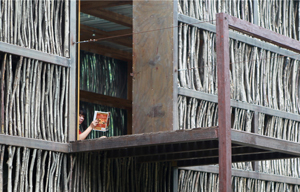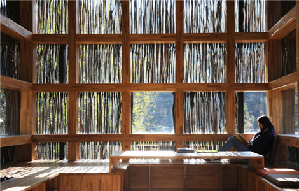Character building
Thinking locally puts Chinese architecture in the center of today's ideas, award-winning Li Xiaodong tells China Daily reporter.
With Chinese developers chasing after foreign architects and the skylines of Chinese cities dominated by skyscrapers, Liyuan Library, despite its modest volume, offers a refreshing Chinese perspective. By using local material to address local issues, the project also managed to identify and enhance the essence of the community it serves.
"We are not going to follow what the West has been through, because the problems we face are different. And when you find the right answer to your own problem, you get your own style," says multiple award-winning architect Li Xiaodong.
To be a center of ideas rather than a periphery that always follows the center, people have to start "to think independently, to identify the problems of the locale and find the appropriate solutions", Li says.
Addressing local issues has been a consistent theme in Li's designs. One of his best-known works is the Bridge School in Fujian province, which won the 2010 Aga Khan Award. Inspired by Chinese traditional acupuncture's meridian theory, the work rejuvenated a divided community by bridging the physical gap between them and encouraging greater interaction.
Li studied architecture at Tsinghua University before acquiring his PhD from Delft University of Technology in the Netherlands.
He then went to Singapore to teach at the department of architecture at the National University of Singapore.
"The reason I went to Singapore was because my mind was messed up with what I learned in China and the Netherlands. I couldn't figure out what I was looking for," Li says.
During the years in Singapore, Li did his research and found the answer.
Singapore went through a post-colonial period when all the iconic buildings were designed by Western architects, until people started to realize that the foreign architects were doing projects in Singapore that were the same as they do elsewhere.
"Architecture is the best way to present a people physically and visually. These buildings built from the 1970s to 80s have nothing to do with Singapore. They don't belong there," Li says.
As Singaporeans started to ask questions about their identity and what Singaporean architecture should be, the country found its solution by addressing its tropical and multinational character. And so did Li.
Related stories:
For more Eco-China, here
| Sticking up for sustainability |





















